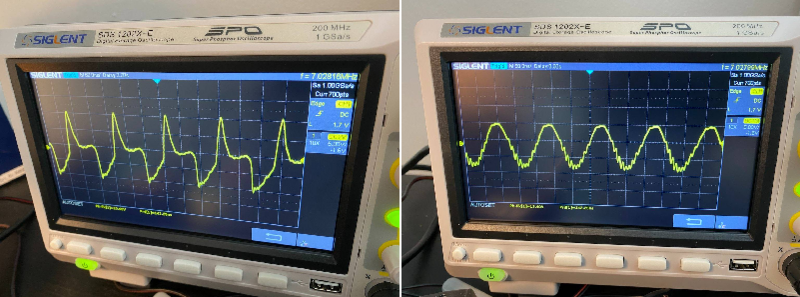Today some more of the components arrived, and i got the oscillator running with a BD139 transistor. The oscillator is taken from the "ten minute transmitter", or an improved version of it i found online.
I hooked up the oscillator to a 50ohm dummy load, and checked it with my oscilloscope, and it looked horrible!(left picture). I added a LP-filter and it cleaned up a bit at least. The output is about 500mW after the LP-filter, but its not very frequency stable. The transmitter begins at 7028,3kHz but drops 500Hz after transmitting 5-10 seconds. Perhaps i should add a power amp transistor to unload the oscillator to make it more stable.
The case has been redesigned without the air holes, and some other smaller adjustments. It takes 8 hours to print, but will be ready in the morning.


This is the design i am using, a version of the "ten minute transmitter".
https://hackaday.com/2021/03/11/getting-on-the-air-with-a-10-minute-ish-ham-transmitter/Edit: I changed the coupling capacitor to the LP-filter, from a 220pF to 940pF, that resolved the chirping and the frequency drift completely, and also made the wave form alot better looking. The RF output got a bit lower as well, and ended up at 300mW. Before and after LP-filter on oscilloscope below.















